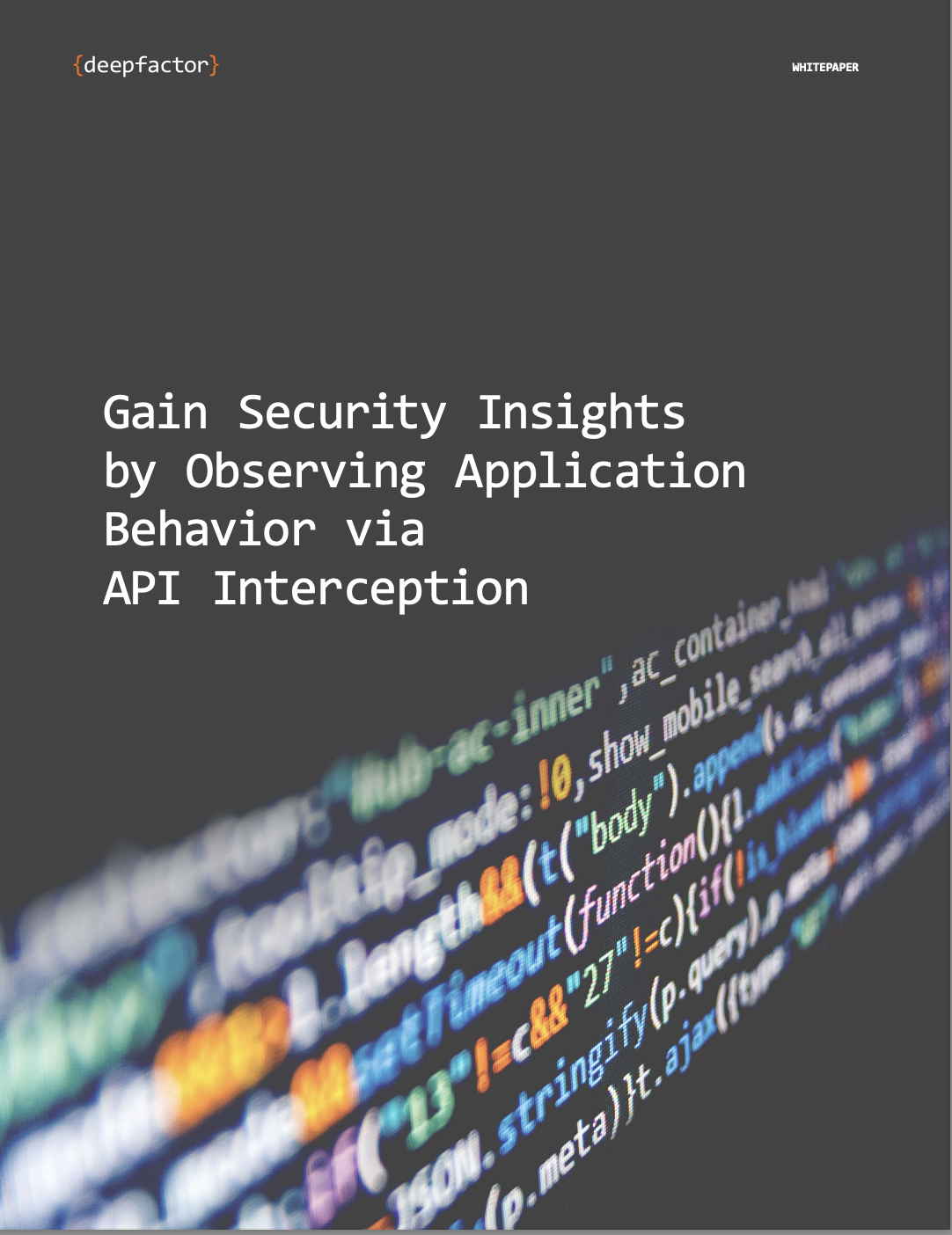Given the unique characteristics of cloud native applications, the average DevSecOps pipeline contains 10 or more application security tools. However—even then—traditional static and dynamic testing can leave developers struggling to pinpoint vulnerable code and prioritize remediation.
Designed for microservices and Kubernetes, Deepfactor observes running applications to provide developers with integrated security insights discovered during development. Deepfactor augments system and regression testing with application security testing to ensure high-severity risks and vulnerabilities are addressed before releasing to production.
Observing Application Behavior via API Interception Read the Whitepaper >
// Cloud Native Application Security:
Contextualize Application Security Insights
Deepfactor observes every thread, process, container, and pod to provide integrated security insights spanning application code, dependencies, container images, web interfaces and compliance.
// Cloud Native Application Security:
Observe with Kubernetes-Native Instrumentation
Deepfactor is purpose-built to automatically observe cloud native applications, employing a language-agnostic library that can be deployed to any Kubernetes cluster with a single command. No sidecars, agents, or kernel modules required.
// Cloud Native Application Security:
Understand Runtime Behavior & Usage
Deepfactor observes running application behavior, composition, system calls, and stack traces to help developers pinpoint and analyze vulnerable code and prioritize its remediation, reducing the time spent fixing inactive code.
// Cloud Native Application Security:
Validate Security Throughout Development
Deepfactor observes running applications during system and regression testing to generate data that can be used to provide developers and QA with high-fidelity security insights. With Deepfactor, every test—unit, integration, regression—becomes a security test.
“The team is so busy with developing new features they didn’t want the additional overhead of looking at security defects. There could be a deluge of false positives. We needed the right tooling. We told AppSec – ‘If you don’t have a test case associated with a particular container, there’s a strong likelihood we’re going to miss out on identifying these vulnerabilities.’”
Sr. Director of Product Development, Large Software Vendor
// Cloud Native Application Security:
Protect Releases with Drift Analysis
Deepfactor scans application code to help engineering teams identify changes and trends in between releases, ensuring updates to dependencies, container images, and API interfaces do not introduce vulnerabilities, risky behavior or insecure code.
-
Contextualize Application Security Insights
// Cloud Native Application Security:
Contextualize Application Security Insights
Deepfactor observes every thread, process, container, and pod to provide integrated security insights spanning application code, dependencies, container images, web interfaces and compliance.
-
Observe with Kubernetes-Native Instrumentation
// Cloud Native Application Security:
Observe with Kubernetes-Native Instrumentation
Deepfactor is purpose-built to automatically observe cloud native applications, employing a language-agnostic library that can be deployed to any Kubernetes cluster with a single command. No sidecars, agents, or kernel modules required.
-
Understand Runtime Behavior & Usage
// Cloud Native Application Security:
Understand Runtime Behavior & Usage
Deepfactor observes running application behavior, composition, system calls, and stack traces to help developers pinpoint and analyze vulnerable code and prioritize its remediation, reducing the time spent fixing inactive code.
-
Validate Security Throughout Development
// Cloud Native Application Security:
Validate Security Throughout Development
Deepfactor observes running applications during system and regression testing to generate data that can be used to provide developers and QA with high-fidelity security insights. With Deepfactor, every test—unit, integration, regression—becomes a security test.
“The team is so busy with developing new features they didn’t want the additional overhead of looking at security defects. There could be a deluge of false positives. We needed the right tooling. We told AppSec – ‘If you don’t have a test case associated with a particular container, there’s a strong likelihood we’re going to miss out on identifying these vulnerabilities.’”
Sr. Director of Product Development, Large Software Vendor
-
Protect Releases with Drift Analysis
// Cloud Native Application Security:
Protect Releases with Drift Analysis
Deepfactor scans application code to help engineering teams identify changes and trends in between releases, ensuring updates to dependencies, container images, and API interfaces do not introduce vulnerabilities, risky behavior or insecure code.
Detect Security Risks Before Shipping
Deepfactor observes running applications in development and testing to help engineering teams uncover critical security risks in custom and third-party code.
Provide Contextual and Actionable Alerts
Deepfactor generates prioritized insights that enable developers to pinpoint insecure code, streamline remediation, analyze drift between releases, and understand potential impact to compliance objectives.
Generate a Dynamic Bill of Materials
Deepfactor distinguishes between active and inactive code, and collects valuable information about the application including packages, dependencies, licenses, processes, and network connections.
Other Use Cases
DevSecOps >
Supply Chain Security >
Compliance >
Software Bill of Materials >


